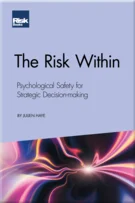The Pearson Correlation Model – Work of the Devil?
Introduction
Correlation Basics: Definitions, Applications and Terminology
Empirical Properties of Correlation: How do Correlations Behave in the Real World?
The Pearson Correlation Model – Work of the Devil?
Cointegration – A Superior Concept to Correlation?
Financial Correlation Modelling – Bottom-up Approaches
Valuing CDOs with the Gaussian Copula – What Went Wrong?
The One-Factor Gaussian Copula Model – Too Simplistic?
Financial Correlation Models – Top-Down Approaches
Stochastic Correlation Models
Quantifying Market Correlation Risk
Quantifying Credit Correlation Risk
Hedging Correlation Risk
Correlation Trading Strategies – Opportunities and Limitations
Credit Value at Risk under Basel III – Too Simplistic?
Basel III and XVAs
Fundamental Review of the Trading Book
The Future of Correlation Modelling
Answers to Questions and Problems in Correlation Risk Modelling and Management
“Not one subject in the universe is unworthy of study”
– Karl Pearson 1857–1936
While by far the most applied correlation model in finance, the Pearson correlation model is – due to its simplicity and linearity – also the most heavily criticised: “Anything that relies on correlation is charlatanism” (Nassim Taleb) and “Instruments whose pricing requires the input of correlation … are accidents waiting to happen” (Paul Wilmott). In this chapter we address this contradiction and evaluate whether the Pearson correlation approach is rigorous and suitable for modelling associations in finance.
INTRODUCTION
The Pearson correlation model is by far the most prominent in finance. It is applied in risk measures such as VaR (value-at-risk), see Chapters 1, 10 and 12; ES (expected shortfall), see Chapter 16; ERM (enterprise risk management); and EVT (extreme value theory). The higher the Pearson correlation between the assets in the portfolio, the higher the risk measures, since high correlation implies a high probability of many assets declining jointly.
Pearson correlations also play a central role in investment analysis. In MPT (modern portfolio theory) a Pearson
Copyright Infopro Digital Limited. All rights reserved.
As outlined in our terms and conditions, https://www.infopro-digital.com/terms-and-conditions/subscriptions/ (point 2.4), printing is limited to a single copy.
If you would like to purchase additional rights please email info@risk.net
Copyright Infopro Digital Limited. All rights reserved.
You may share this content using our article tools. As outlined in our terms and conditions, https://www.infopro-digital.com/terms-and-conditions/subscriptions/ (clause 2.4), an Authorised User may only make one copy of the materials for their own personal use. You must also comply with the restrictions in clause 2.5.
If you would like to purchase additional rights please email info@risk.net











